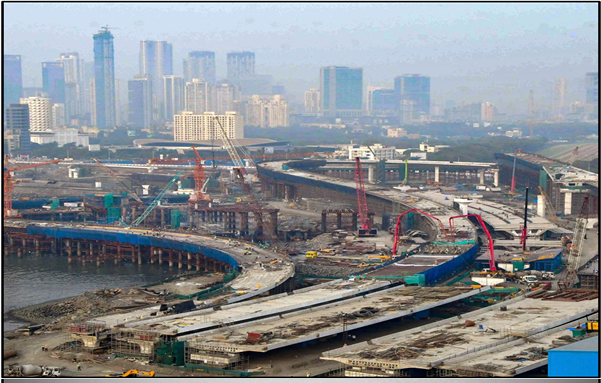AN OUTLINING OF URBAN TRANSFORMATION STRATEGIES
source:www.thehindu.com
Relevance:
- GS 1 – Urbanization
- GS 2 – Government Policies and Interventions
- GS 3 – Infrastructure
Focus:
- Analysis of strategies in the 2023-24 Union Budget for urban transformation, covering housing, infrastructure, and sustainable urban development.
- Details initiatives, objectives, and impact on urban growth and quality of life in cities.
Current Scenario:
- Urban Population Growth: 50 crore people, 36% of India’s population; growing at 2% to 2.5% annually.
- Urbanisation Needs: Demands sustained investments and strategic planning for city development.
Key Issues and Proposals:
- Housing:
- Pradhan Mantri Awas Yojana (Urban): Since 2015, 85 lakh housing units for EWS and MIG with ₹8 lakh crore investment.
- New Proposals: 60 lakh more units with ₹2 lakh crore investment; ₹48,000 crore allocated for 2023-24.
- Infrastructure Development:
- AMRUT: ₹8,000 crore for city infrastructure, emphasizing PPP models.
- Other Investments: ₹1 lakh crore for road infrastructure, focusing on urban connectivity; ₹1.5 lakh crore for state infrastructure development.
- Transit-Oriented Development: Developing metro rail networks and public transport systems.
- Solid Waste Management:
- Challenges: Significant issue needing efficient waste systems.
- Proposals: Financial assistance for waste processing and recycling facilities.
- Economic and Transit Planning:
- Urban Planning Framework: Orderly development and sustainable growth; financial support for metro networks and public transportation.
- Economic Zones: Establishing SEZs and industrial corridors.
- Water Supply and Sanitation:
- Jal Jeevan Mission (Urban): Piped water supply and improved sanitation.
- Smart Water Management: Efficient use and distribution of water resources.
Impact Analysis
- Housing for All:
- Affordability: More affordable housing for EWS and MIG; reduces slums.
- Economic Growth: Stimulates economic activity via construction jobs and related industries.
- Infrastructure Development:
- Urban Connectivity: Enhanced mobility, reduced congestion, supports economic activities.
- PPP Model: Leverages private investment for urban development.
- Sustainable Urban Growth:
- Waste Management: Cleaner cities, better public health, environmental sustainability.
- Water and Sanitation: Promotes health and well-being, improving urban life quality.
- Economic and Social Benefits:
- Job Creation: Infrastructure projects create jobs, boosting local economies.
- Quality of Life: Improved infrastructure and services enhance urban livability.
- Environmental Sustainability:
- Green Building Initiatives: Energy-efficient, environmentally friendly practices.
- Renewable Energy: Reduces carbon footprint, enhances energy security.
Case Studies
|
Broader Implications
- Inclusive Urbanisation:
- Balanced Development: Benefits for all society sections.
- Policy Integration: Coordinated efforts for holistic development.
- Climate Resilience:
- Green Infrastructure: Promoting sustainable transportation and energy.
- Disaster Preparedness: Integrating disaster risk reduction.
- Governance and Institutional Capacity:
- Strengthening Local Bodies: Enhancing capacity for urban projects.
- Transparency and Accountability: Ensuring project execution transparency.
- Social Inclusivity:
- Equitable Access: Ensuring access to services and infrastructure for all.
- Community Participation: Encouraging involvement in planning and decision-making.
- Health and Well-being:
- Public Health Infrastructure: Investing in healthcare for quality services.
- Green Spaces: Developing parks to improve residents’ well-being.
- Cultural Preservation:
- Heritage Conservation: Integrating cultural preservation in plans.
- Cultural Spaces: Promoting community engagement and identity.
Future Directions
- Integrated Urban Planning:
- Comprehensive Approach: Including housing, transportation, and sustainability.
- Stakeholder Engagement: Involving citizens, private sector, and agencies.
- Technological Innovation:
- Smart Solutions: Leveraging technology for efficient management and citizen engagement.
- Digital Infrastructure: Supporting e-governance and service delivery.
- Sustainable Finance:
- Innovative Financing Models: Municipal bonds, land value capture, climate finance.
- Private Sector Participation: Encouraging participation through incentives.
- Policy Integration:
- Comprehensive Framework: Integrating economic, social, and cultural objectives.
- Stakeholder Involvement: Involving communities, businesses, and policymakers.
- Resilient Infrastructure:
- Climate-Resilient Design: Infrastructure for climate impacts.
- Sustainable Urban Transport: Promoting environmentally sustainable public transport.
Conclusion
The Budget’s urban transformation strategies address urbanization challenges through a comprehensive approach focusing on housing, infrastructure, sustainable growth, and effective governance to create livable, inclusive, and resilient cities.
Mains Question:
Examine the strategies outlined for urban transformation in the Budget. How do these strategies aim to address the challenges of urbanisation and promote sustainable urban growth? (250 words)
Source: The Hindu




